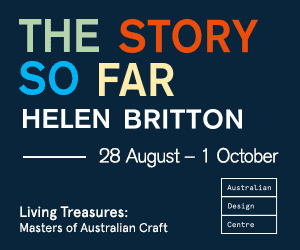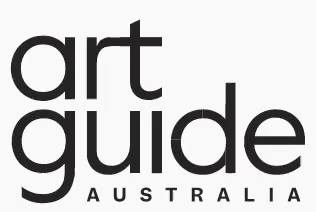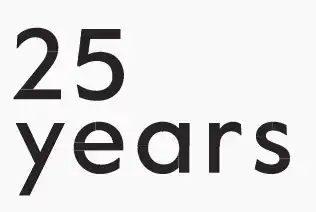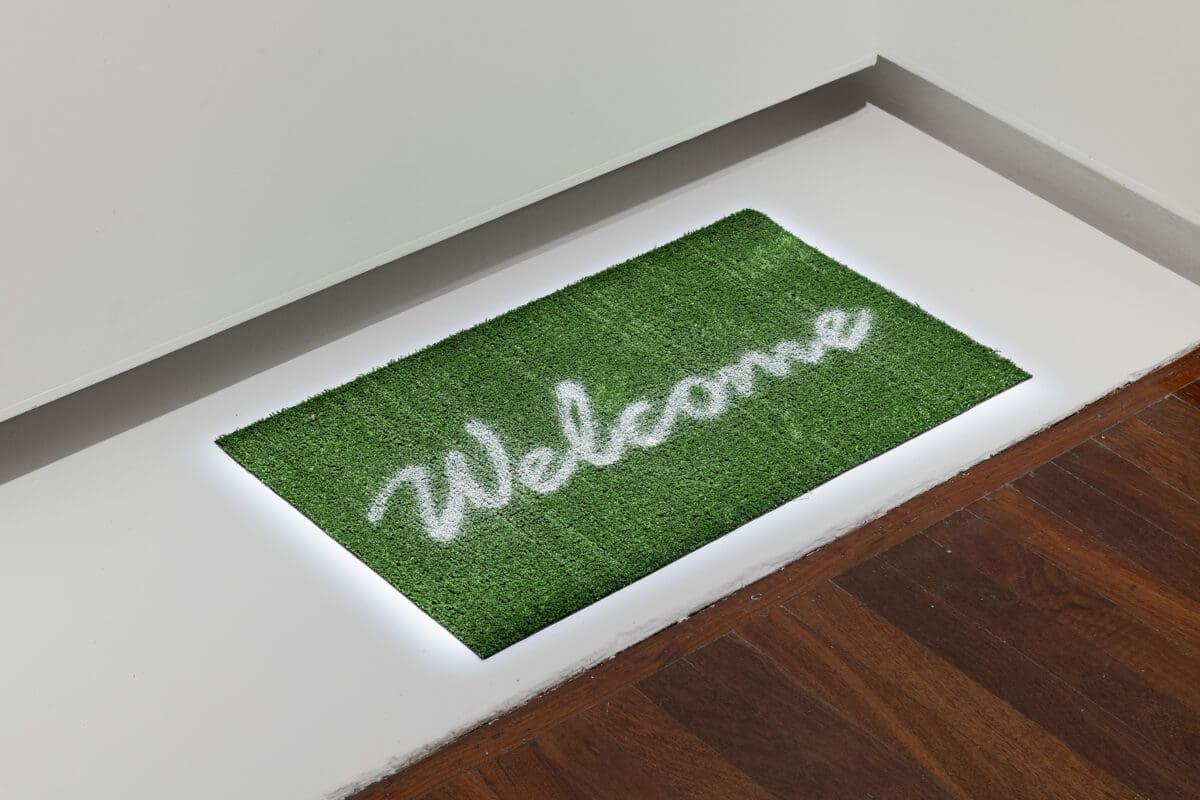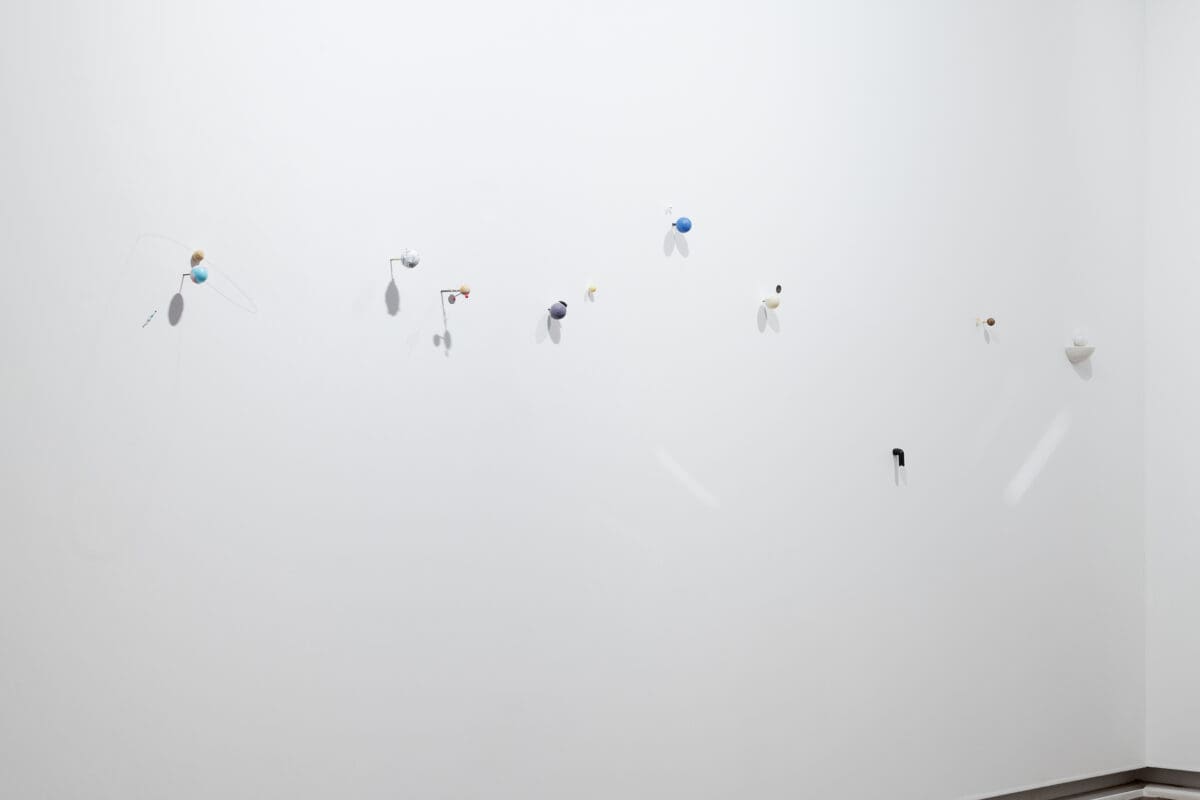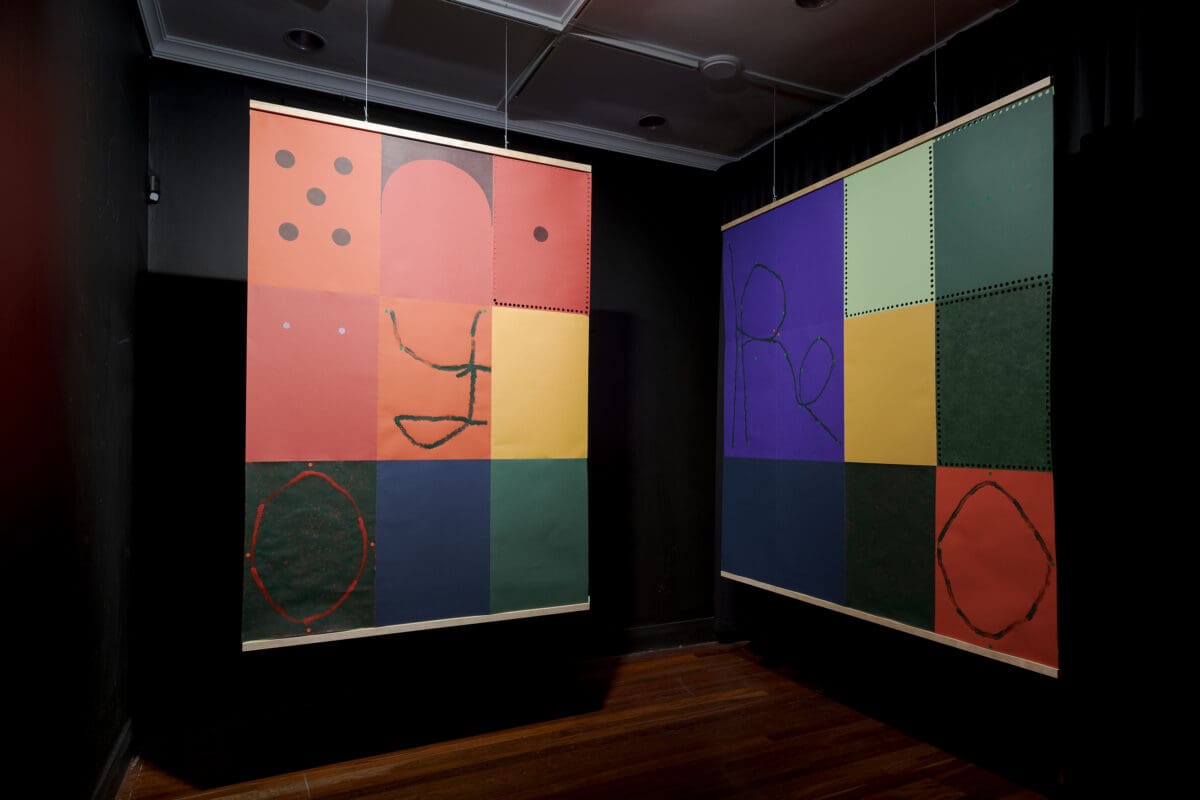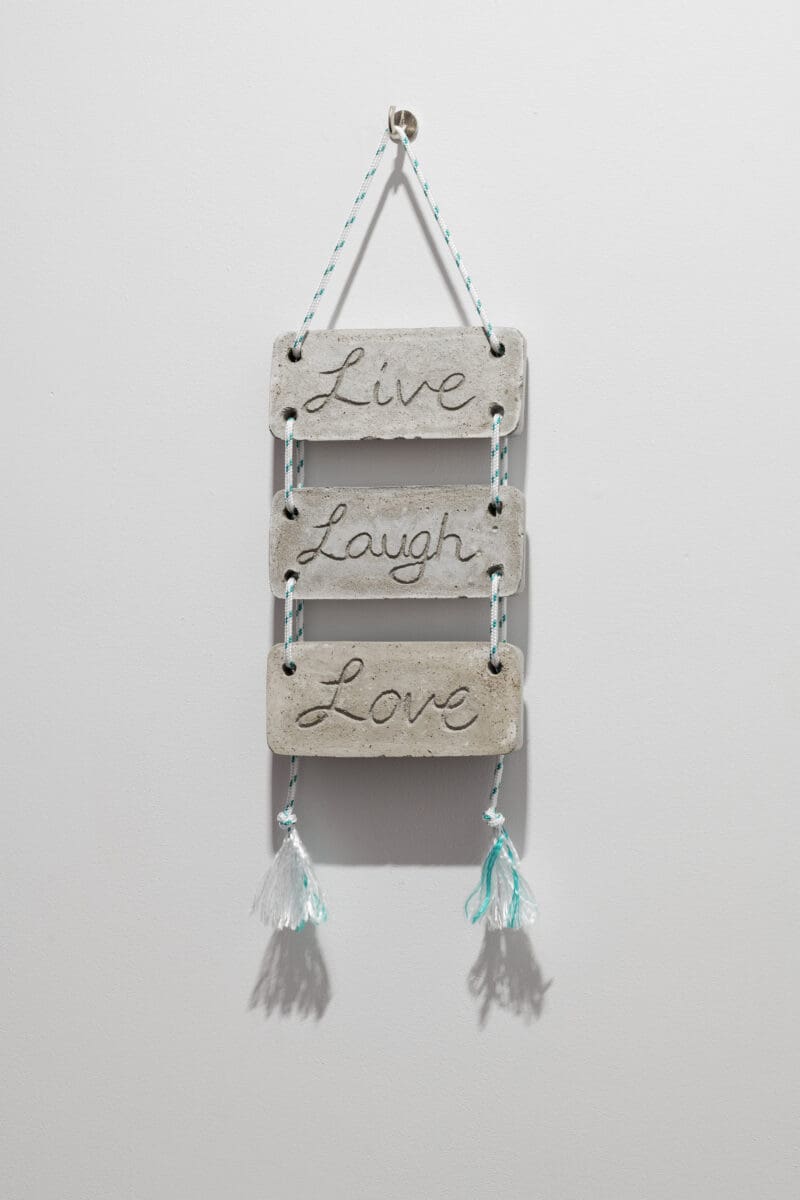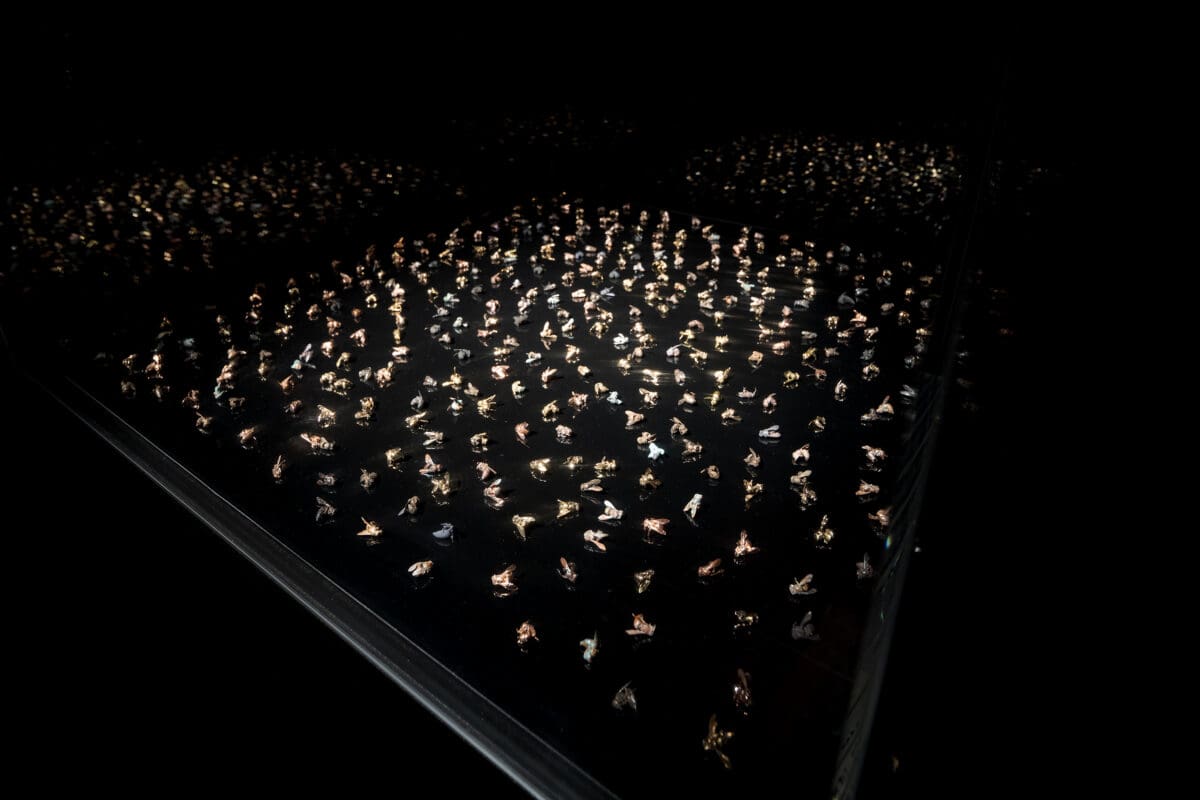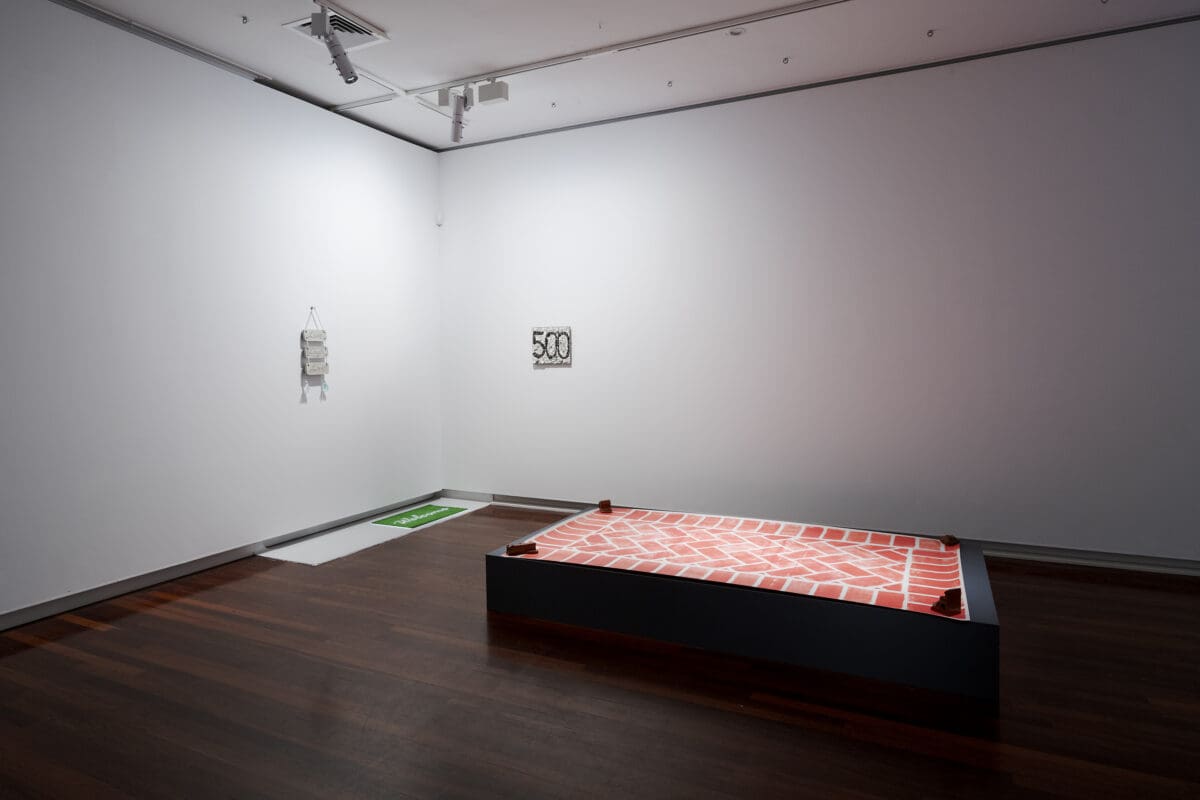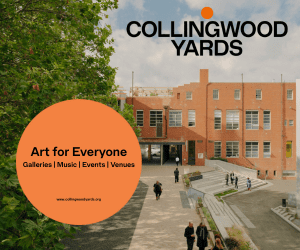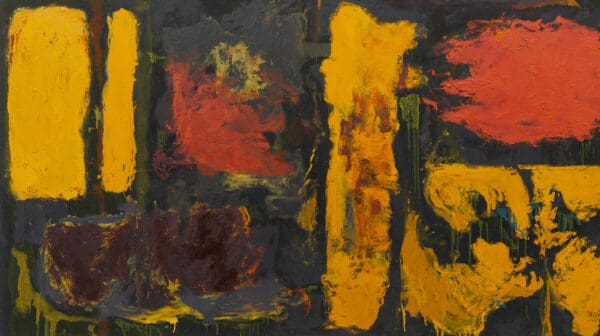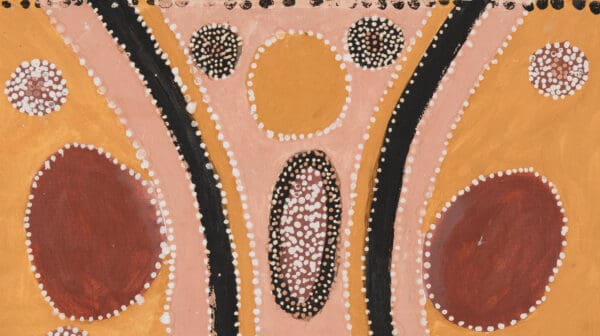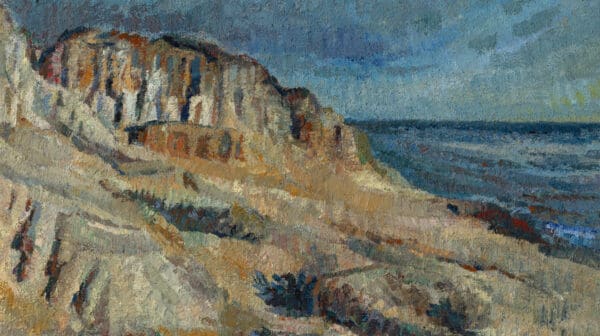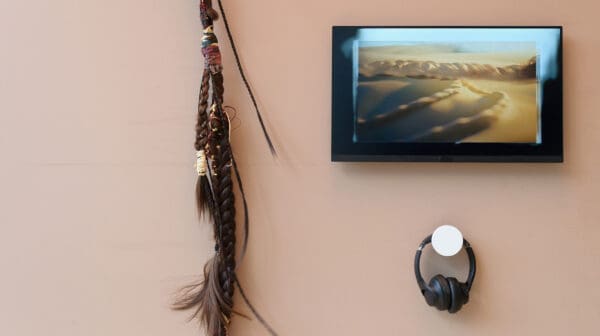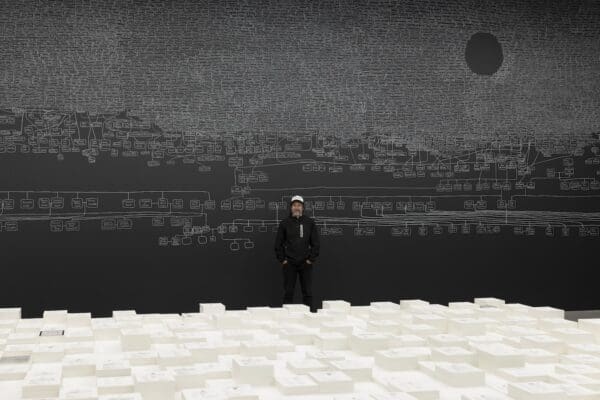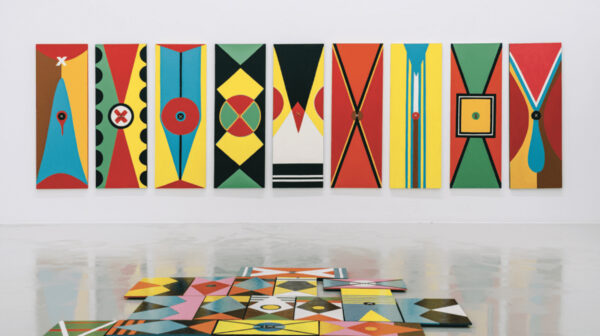Goolugatup Heathcote is a cultural precinct overlooking the river on Whadjuk Noongar Country (Western Australia). Goolugatup is a Noongar word meaning place of children. This sense of play and openness that children exude is echoed in the curatorial framework of Goolugatup’s current exhibition—Melville Contemporary.
“Melville Contemporary was a somewhat strategic modification of more traditional forms of the local council art prize,” explains curator Paul Boye. “Prizes are important to the visual arts industry. They offer support, exhibition opportunities and remuneration. Melville Contemporary came from a desire for more contemporary and experimental work. It still retains a feeling of the structure of a prize. Artists are selected through an open call, with an intentionally simple application process. Artists can apply with a portfolio of past work and are not expected to propose an exhibition idea. This allows room for development and lessens application fatigue.”
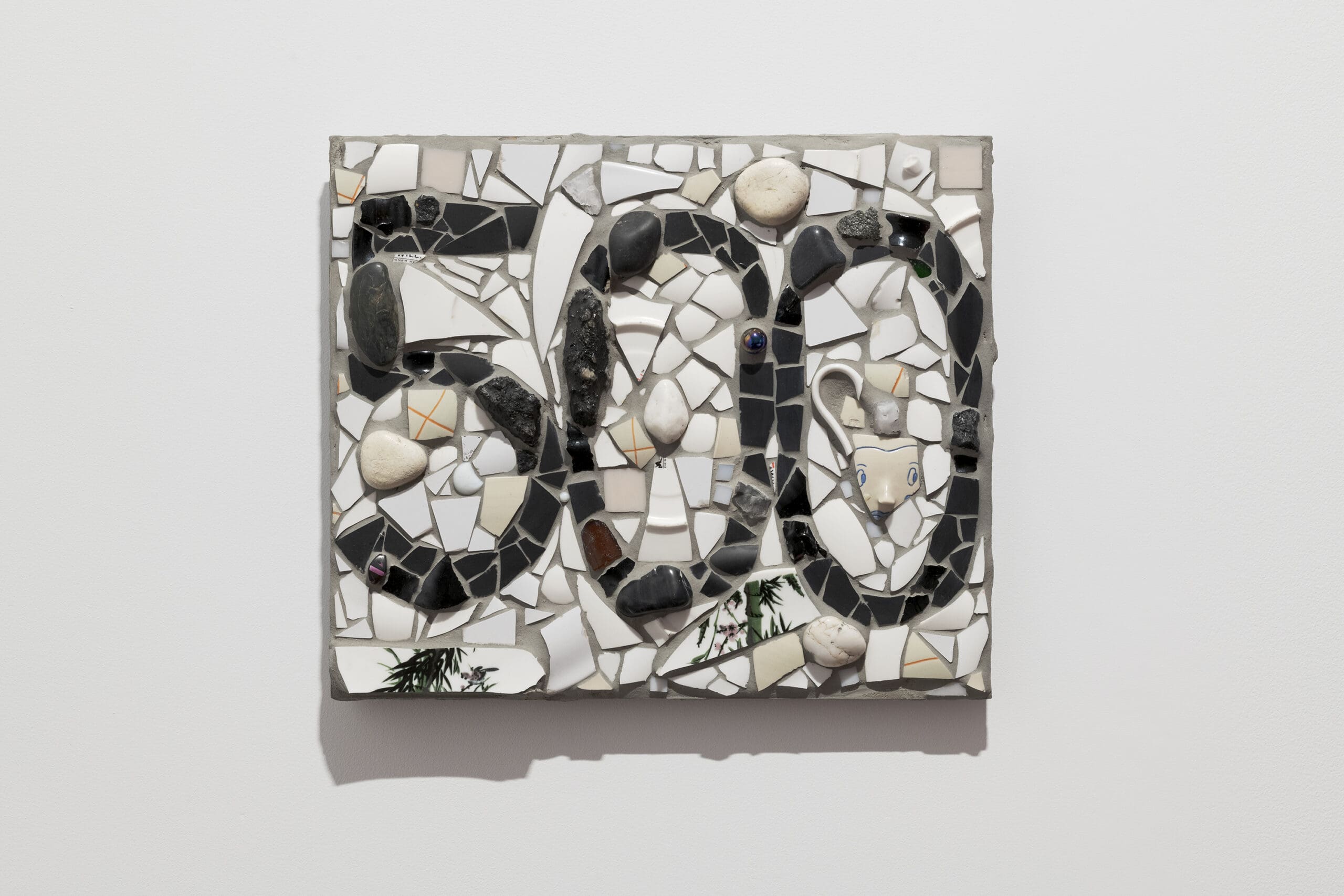
The artists for Melville Contemporary are diverse, sitting at different points of their careers, with varied levels of prior exchange with Goolugatup. Multi-disciplinary artist Mohammed ‘Ayo Busari’ had previously worked on Goolugatup Sounds—an ongoing sound series that coincides with the exhibition program. Busari was born in Nigeria and migrated to the UK before moving to Boorloo (Perth). He explains, “I’m of Yoruba identity—a tribe and group of people from Southwest Nigeria. I speak Yoruba and I’m a Yoruba person.” For Melville Contemporary, Busari produced Home Frequencies: Ẹ Káàbọ̀— an installation comprised of a four-channel sound work and projected video. Ẹ Káàbọ̀ is a Yoruba word meaning “welcome.”
Busari brought a group of session musicians and vocalists together. Words and sounds meet, meld and collide. Busari explains, “this represents my different identities coming together.” An accompanying projected video displays phrases such as, “welcome to my home, my friend…”
This commission allowed Busari to really focus on his Yoruba identity. Past works have explored his, “wider African identity and identity as a black person.” He explains, “I live and work in the Western world, on stolen land. By using these words and exploring Yoruba traditions, I’m identifying as Yoruba. Although, my experiences will be totally different to a Yoruba person in Nigeria. I’m between two worlds. I’m acknowledging the place I’m in and the new community I’ve built. I wouldn’t have been able to do this project in Nigeria.” It is the perspective of distance that allows Busari to celebrate the hospitality synonymous with Yoruba culture. Busari reflects, “when you live in a place where everyone is the same, you don’t feel the need to celebrate the practices of daily life. Sometimes you must leave something to recognise its importance.”
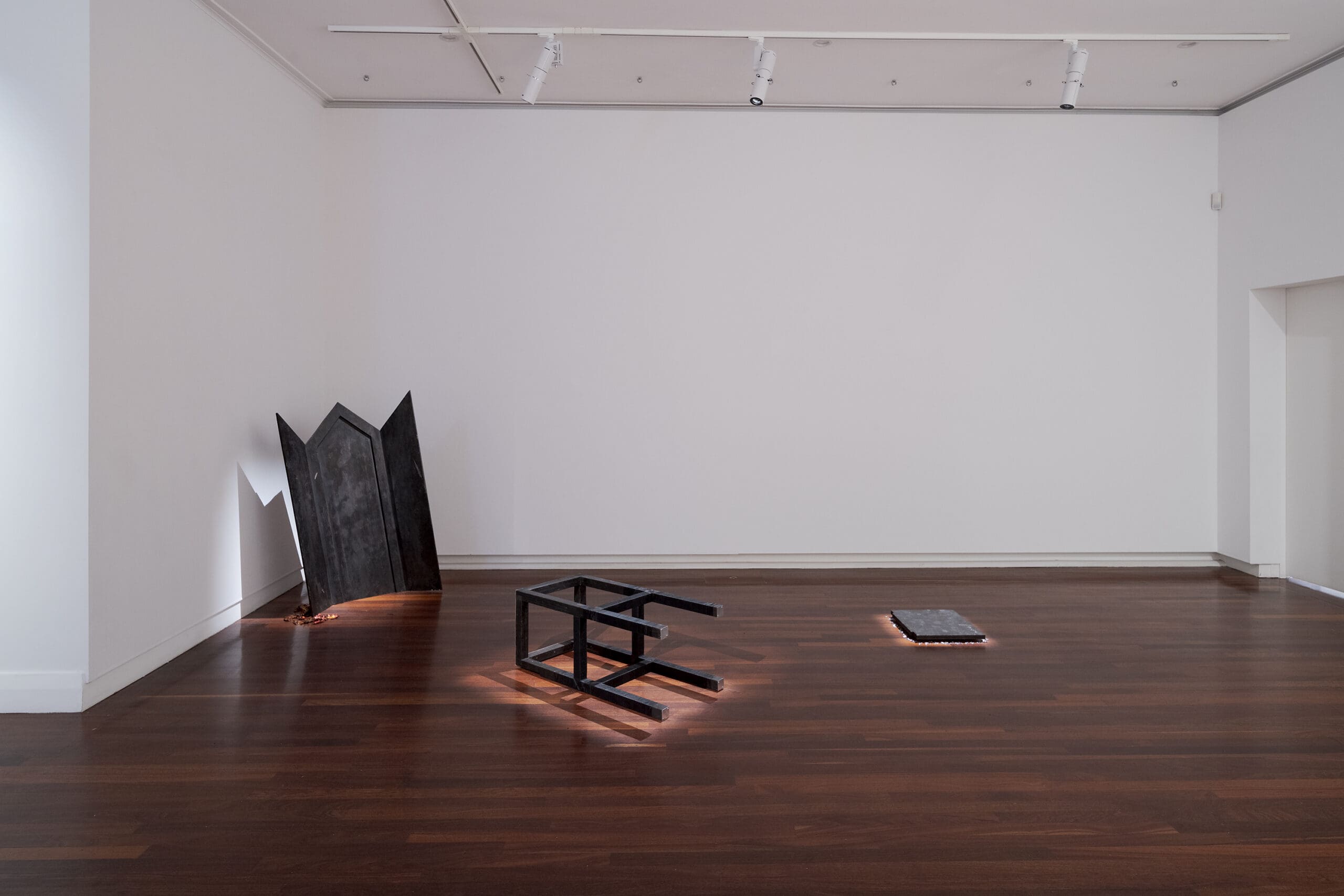
Bryce Olsen and Pip Lewi are both reasonably recent Curtain University graduates. Olsen has produced a continuation of his well-known sculptural forms. “Olsen thinks a lot about the lure, desire and traps of furniture. About what happens when a piece of furniture becomes questionable,” Boye says. The burnt timber surfaces of Olsen’s sculptures reference the lure. On the sculptures sit aluminium hand-cut casts of flies. As Boye says, “these bugs have been lured by the sculptures.”
Lewi, well known for their investigations of suburban paranoia and day-to-day mundanity, produces work based on their neighbourhood dérives. They are interested in the mundane aspects of newer-growth suburbs. The works exhibited reference when Lewi scrawled the words, ‘live laugh love’ into wet concrete in front of a new house and was fined $500.00. The work considers the notion of being punished within constructed suburban environments.
For Hyperbolic Orbit Bennett Miller was awarded the Melville Contemporary prize, which will afford Miller a solo exhibition in 2027. Speaking of Miller’s longstanding practice, Boye describes Miller’s work as, “some of the most idiosyncratic and eclectic art-making from Perth. Miller has collected spherical found objects and arranged them in a formation across the wall. Boye notes, “this orbital body of assembled sculpture reflects Miller’s memories of the space race—a point of history he experienced as a child. He’s created this deconstructed diorama, with no exact one-to-one correspondence with the solar system. He thwarts our expectations of what a space display may be, yet produces a recognisable representation of the planetary.”
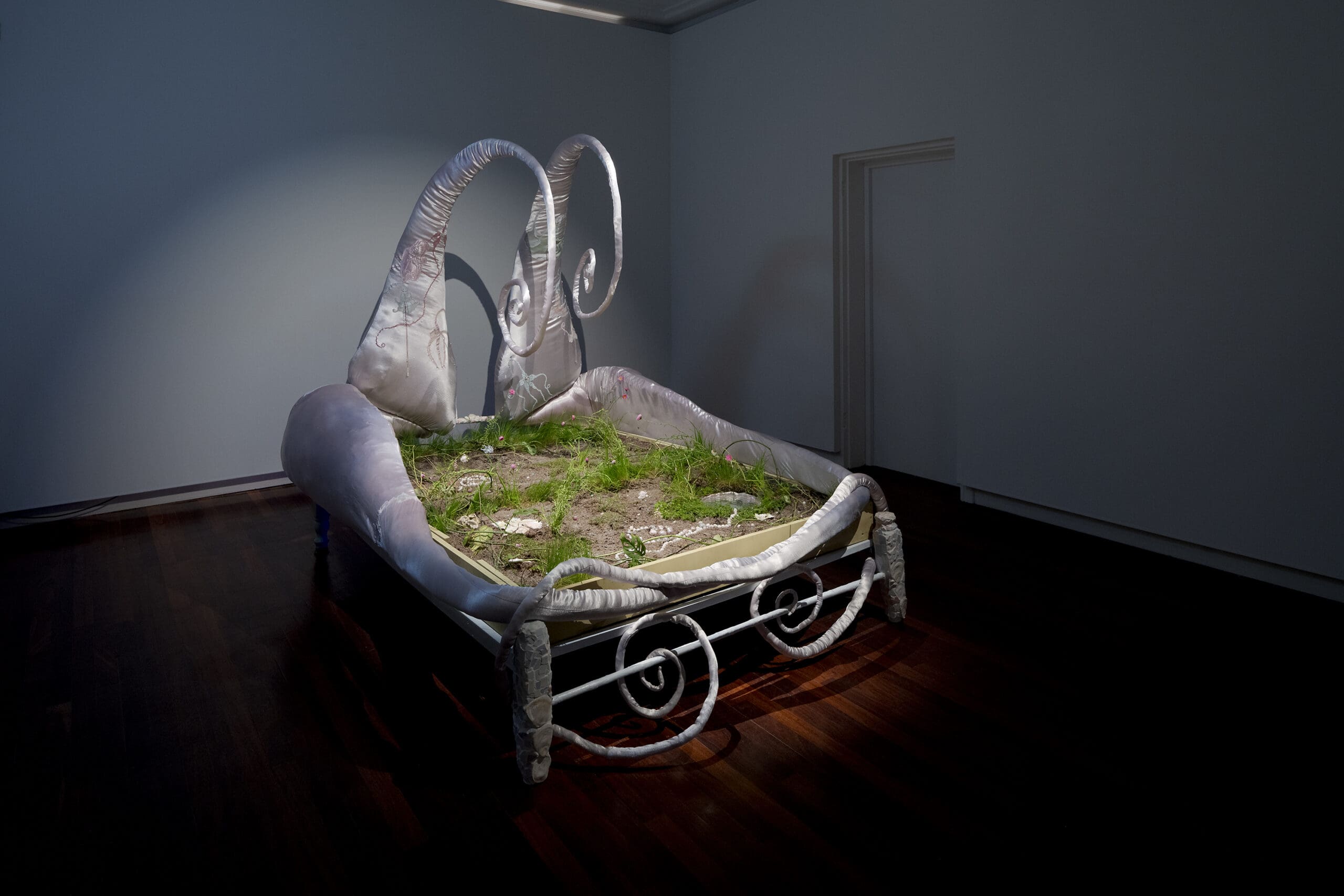
Brighde O’Hara presents a soft sculptural bed-like form. Thinking about dead rot, while talking through the language of soft sculpture.
Amy Perejuan-Capone has been producing large-scale sculptures as part of an ongoing research project reflecting her father’s aviation experience. Melville Contemporary allowed Perejuan-Capone to continue this research at a smaller scale. Working with donated dead bees and electroforming processes, the artist has coated bees in gold and copper and presented them in a darkened space. There are 365 bees, representing the duration of a western calendar. The work can be seen as a commentary on mining, extraction and climate change. The still bees allude to a sense of the stilling of nature at the hands of humans.
Andrew Varano, an alumni artist of Goolugatup, presents a colourful mixed-media installation, Numbers and numbers. In Boye’s words, “Varano is interested in thinking and learning about language. Through formal arranged gestures in space, Varrano considers how adults can re-learn, despite being within a world of neoliberal corporate language.”
“The most interesting thing about Melville Contemporary”, Boye notes, “is the way it prioritises experimental and exploratory practices. This, coupled with such an open EOI process, allows us to promote and uncover things that would elsewise remain covered.”
Melville Contemporary
Goolugatup Heathcote
20 September—16 November

